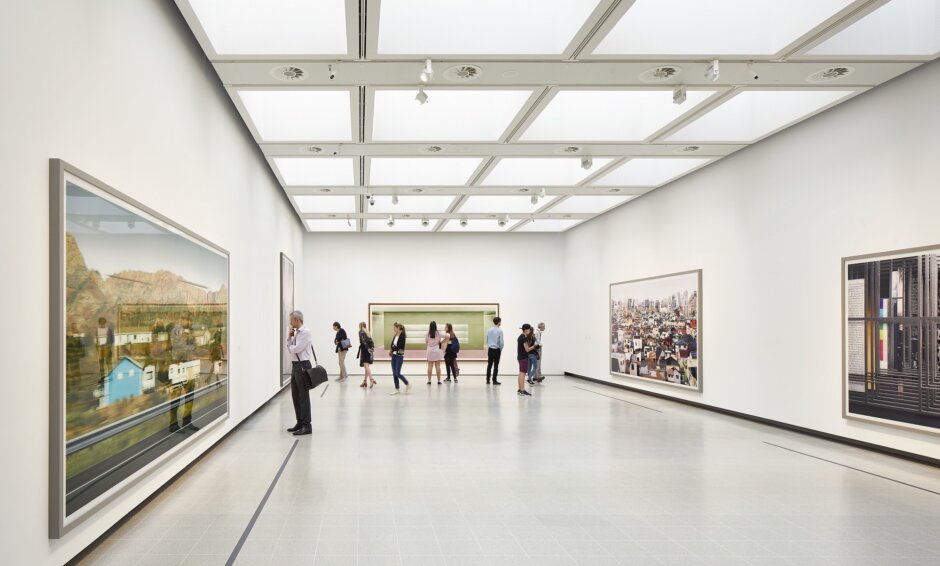The Benefits of Daylight
Nick Cramp
Senior Partner and Light+Air Leader
Max Fordham LLP

Whilst some approaches to the design of sustainable buildings are focused almost exclusively on energy consumption, truly sustainable buildings are also healthy, economically viable spaces and places.
Conserving natural resources, eliminating pollution, protecting biodiversity and going beyond the expected will contribute to climate positive development and buildings that enhance their settings and the people that experience them. Careful and considered use of natural light really is central to this philosophy. Daylight is much more than a source of illumination; it is essential for our physical and emotional well-being.
A Daylight Manifesto
We therefore propose the aim that all internal spaces are lit primarily with daylight, for the following reasons:
- Daylight has exceptional colour rendering and spectral balance, which facilitates work, study and play, as well as allowing the architecture and building contents to be appreciated more fully.
- Occupants appreciate a ‘connection’ with the external environment through daylight and views, and studies (including by the World Health Organisation and Green Building Council) show that increased access to daylight improves productivity, healthy sleep, recovery from illness and a general sense of well-being.
- Changes of tone in daylight throughout the day (warm light in the morning and evening and cooler light in the middle of the day) further amplify the connection with outside and drive many of our bodies’ natural rhythms and processes.
- Daylight is an essential tool in creating beautifully lit, visually pleasing environments
- Throughout the history of construction, daylight has been the primary source of lighting and its use respects the heritage of our built environment
Of course, minimising energy consumption and carbon emissions is critical to tackling the climate emergency and good daylight provision when combined with a comprehensive artificial lighting control system can also provide significant energy savings on lighting electricity usage.

Daylight and artificial lighting integrated at the Hayward Galleries, London
Analyse and Optimise Glazing to Benefit From Daylight Whilst Avoiding Problems
With natural light, however, come the risks of glare, overheating in summer fuelled by solar heat gain, and large heat losses in winter arising from the installation of excessive or inappropriate glazing.
In Net Zero Carbon buildings, daylight, views and access to the outside must be balanced against the need for solar shading and the building’s energy consumption. To solve this equation building designers must very carefully analyse and optimise the size and position of the glazing in the building envelope.
Management of solar gains and daylight can best be achieved by
- Adjusting the orientation, massing and form of the building to provide the optimum balance between daylight, beneficial solar gain, deleterious heat loss and views out
- Sizing windows and roof lights to meet internal design targets, whilst including solar shading responsive to orientation and inclination to deal with peak conditions
- Providing the right mix of shading and illumination (inside and outside) in a way that is linked to the local climate
- Thinking about materials in the landscape, on the facades and internally and making the best use of natural resources (such as shading through trees, good natural ventilation and evapotranspiration from planting)
- Understanding the potential for energy savings by testing options for shading systems, extent of glazing, thermal performance and construction types as well as working out which aspects of the design would make the most effective investment in reducing energy and emissions
- Designing flexible systems which are easily accessed by the building users and which respond to changing conditions

When Might Daylight Not Be Wanted?
As much as daylight is an essential resource for people and nature, it is worthwhile pointing out that there are circumstances where it must be limited or excluded entirely to prevent damage to sensitive materials. This is frequently an issue in museums and galleries, as most organic exhibits (for example old documents and photographs, furniture and paintings) need to be protected from the damaging effects of sunlight. It may also be the case in heritage buildings where the building fabric itself may be delicate, as well as in retail and fashion houses, print shops and textile factories where there are materials and products which could fade.
Daylight and Net Zero Carbon Buildings
In summary, the provision of daylight in buildings is driven by our human needs and it is an essential component of healthy working and living spaces. Done well, daylight can help reduce energy consumption and contribute to the design of a Net Zero Carbon building by providing a free source of heat and light, but great care must be taken in designing the building envelope to get these benefits whilst at the same time minimising summertime solar gains, glare and winter heat loss.


